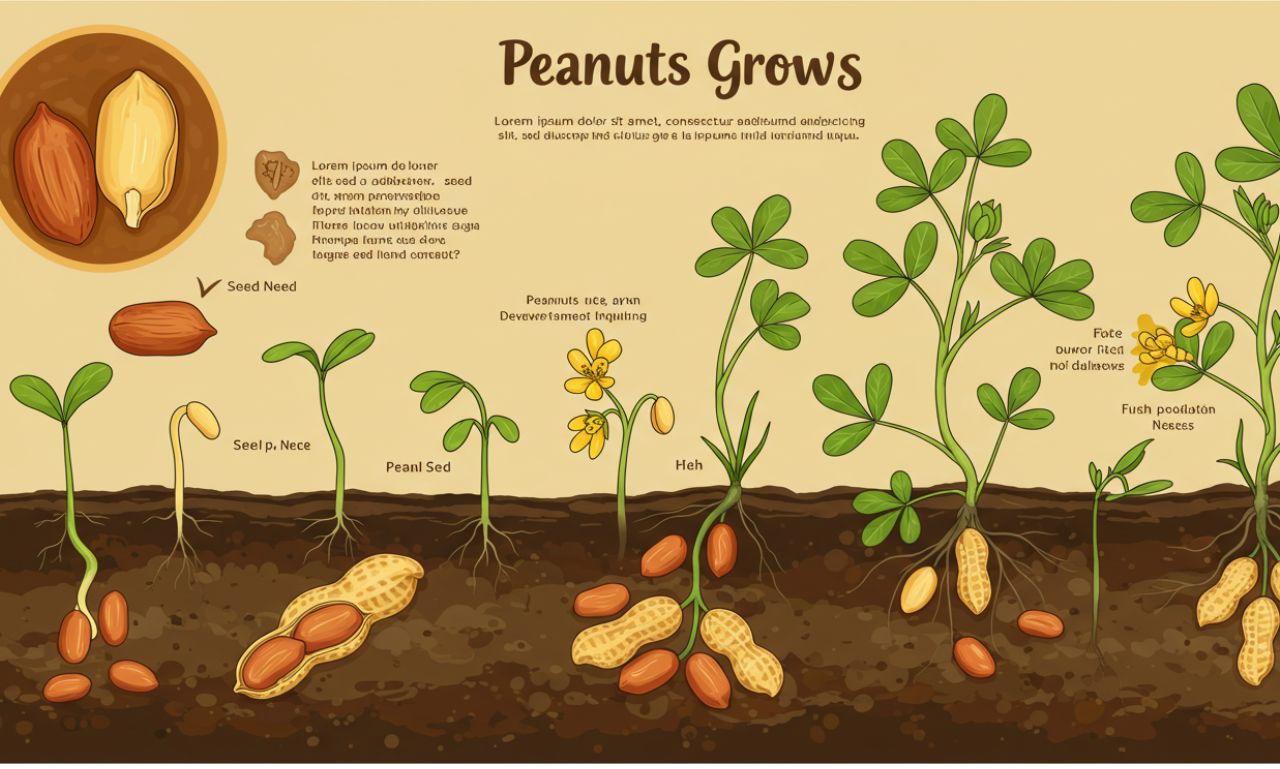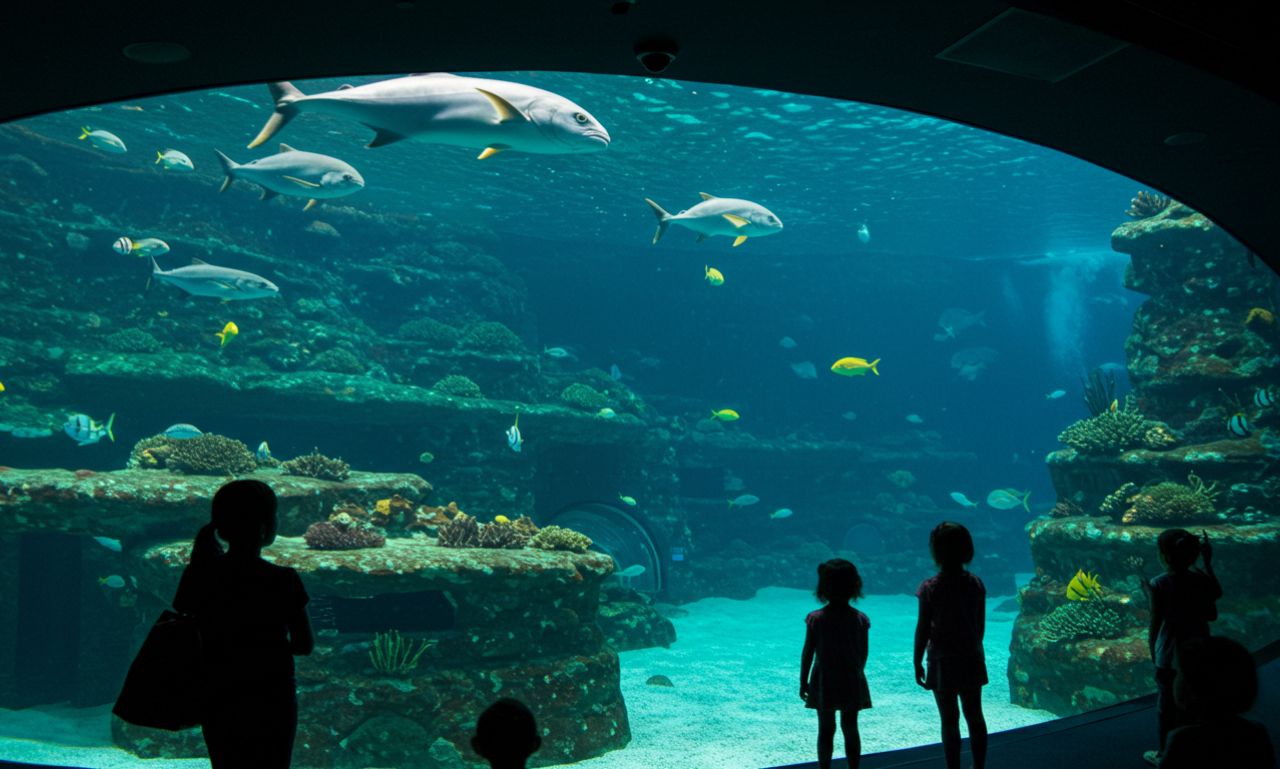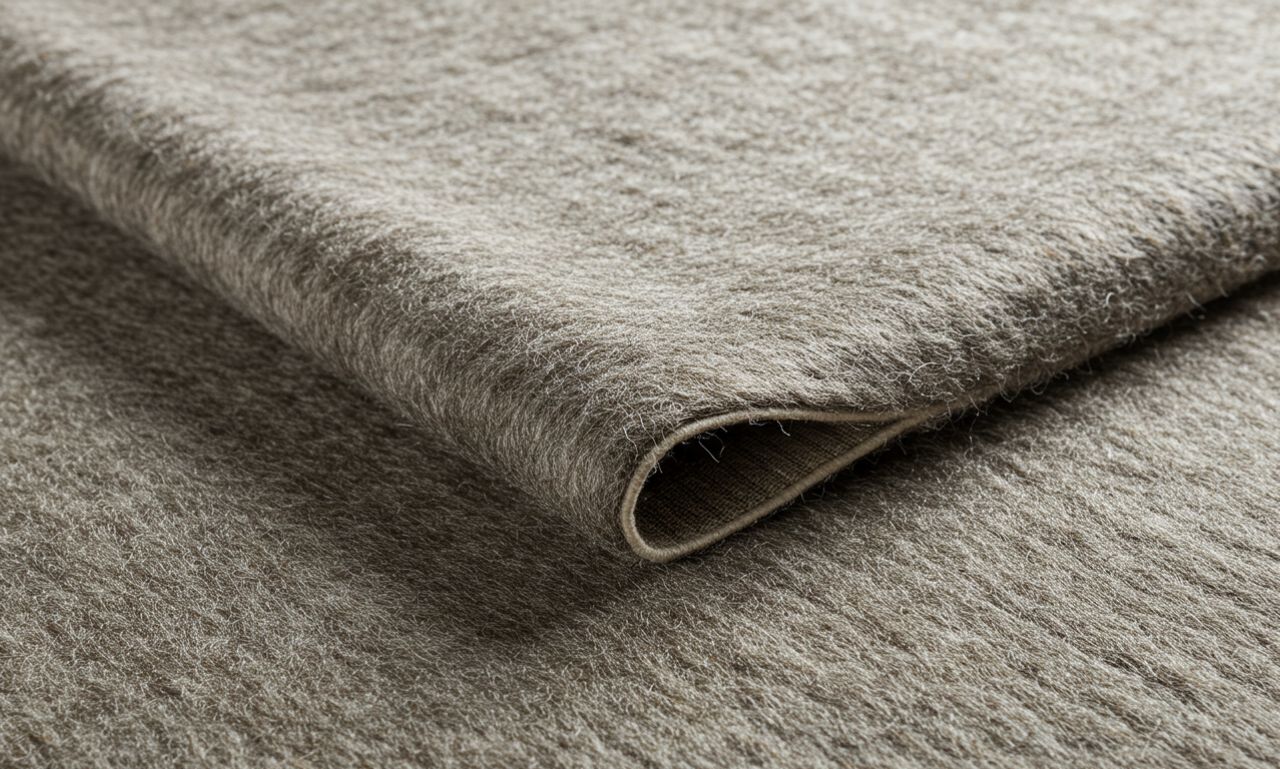Life Style
How Do Peanuts Grow

Many people enjoy peanuts daily in snacks, desserts, and peanut butter, but few know the fascinating process behind their growth. If you have ever wondered how do peanuts grow, you might be surprised to learn that peanuts are not true nuts. Instead, they belong to the legume family, growing underground in a way that makes them unique compared to tree nuts. This guide explains the complete journey of peanuts—from planting to harvesting—so you can fully understand how this amazing crop develops.
Understanding the Peanut Plant
Before answering the question how do peanuts grow, it is important to understand the peanut plant itself. The scientific name for the peanut is Arachis hypogaea. Unlike most crops, peanuts begin their growth above the soil but mature underground. The plant is a self-pollinating annual that thrives in warm climates with sandy, well-drained soil.
Key Features of the Peanut Plant
| Feature | Description |
|---|---|
| Plant Type | Annual legume |
| Climate Preference | Warm, frost-free regions |
| Soil Requirement | Loose, sandy, well-drained soil |
| Pollination | Self-pollinating |
| Growth Period | 120–150 days to maturity |
These unique characteristics make peanuts both fascinating and valuable as a crop.
The Life Cycle of a Peanut Plant
When discussing how do peanuts grow, the life cycle plays a central role. Peanuts follow a distinctive pattern compared to other legumes.
Germination
The peanut journey begins when seeds are planted in the soil. The seed absorbs moisture and begins to sprout. Germination usually occurs within 7–10 days in warm conditions.
Vegetative Growth
After germination, the plant produces green leaves that capture sunlight for photosynthesis. The root system expands to support healthy growth.
Flowering
Peanut plants produce small, yellow, self-pollinating flowers. These flowers bloom above ground but only last a day. After pollination, a remarkable process begins.
Pegging
This is the unique stage that answers how do peanuts grow underground. Once fertilized, the flower stalk (called a peg) elongates and bends downward. It pushes into the soil, carrying the fertilized ovary.
Pod Development
Inside the soil, the peg develops into a pod, where peanuts grow. Each pod may contain two to four kernels, depending on variety and growing conditions.
Maturation and Harvest
Over the course of 120–150 days, the pods mature underground. Farmers then dig up the entire plant, shake off soil, and allow it to dry before removing the peanuts.
How Do Peanuts Grow Compared to Other Nuts
One of the most common misconceptions is that peanuts grow on trees like almonds or walnuts. In fact, peanuts differ significantly.
| Crop | Growth Method |
|---|---|
| Peanut | Underground pods formed from pegging |
| Almond | Grows on trees as a stone fruit |
| Walnut | Grows on trees inside hard shells |
| Cashew | Grows attached to cashew apples on trees |
This distinction highlights why peanuts are technically legumes, even though they are commonly referred to as nuts.
Environmental Requirements for Peanut Growth
To fully understand how do peanuts grow, one must consider the environmental conditions they require.
| Condition | Requirement |
|---|---|
| Temperature | 70–85°F (21–29°C) |
| Rainfall | 20–40 inches during the growing season |
| Soil Type | Sandy loam with good drainage |
| Sunlight | Full sun, at least 6–8 hours per day |
| Frost Tolerance | Cannot survive frost |
Meeting these conditions ensures healthy peanut crops and higher yields.
Geographic Regions Where Peanuts Grow
Peanuts thrive in warm regions around the world. In the United States, they are mainly grown in Georgia, Texas, Alabama, Florida, and North Carolina. Globally, China and India are the leading producers. Understanding the geography helps explain how do peanuts grow in different climates.
| Country | Annual Production (Approx.) |
|---|---|
| China | 17 million metric tons |
| India | 6.9 million metric tons |
| Nigeria | 4.5 million metric tons |
| United States | 2.5 million metric tons |
These figures demonstrate the global importance of peanuts as a crop.
Nutritional Role in the Growth Process
The soil in which peanuts grow plays a role in their nutrient composition. Rich in proteins, healthy fats, and vitamins, peanuts benefit both the soil and humans. As legumes, they fix nitrogen in the soil, improving fertility for future crops.
Fascinating Facts About Peanut Growth
- Peanuts take about five months from planting to harvest.
- Unlike most plants, the fruit develops underground.
- A single plant can produce 30–50 pods.
- Farmers rotate peanuts with crops like cotton and corn to preserve soil health.
These facts add to the fascinating story of how do peanuts grow in natural conditions.
Common Challenges in Peanut Cultivation
While learning how do peanuts grow, it’s also essential to understand challenges farmers face.
| Challenge | Impact on Growth |
|---|---|
| Pests (rootworms, thrips) | Damage leaves and roots |
| Diseases (leaf spot, wilt) | Reduce yield |
| Excess Rainfall | Causes mold and rot |
| Drought | Stunts pod development |
Farmers often rely on crop rotation, irrigation, and pest management to maintain healthy yields.
Harvesting and Post-Harvest Handling
The harvesting process concludes the cycle of how do peanuts grow. Farmers use machines to uproot the plants, shake off soil, and leave them in the field to dry. After drying, pods are separated, cleaned, and prepared for storage or processing.
Drying is crucial because peanuts with high moisture are prone to mold growth. Once dried properly, they can be roasted, processed into peanut butter, or used in countless culinary applications.
Conclusion
The journey of peanuts from seed to snack is both fascinating and unique. Understanding how do peanuts grow reveals that these beloved legumes begin as flowers, send pegs into the soil, and develop pods underground before reaching maturity. Unlike true nuts, their underground development sets them apart, making them a remarkable crop. With the right conditions, farmers around the world cultivate peanuts that end up in kitchens, snacks, and cuisines everywhere. Next time you enjoy a handful of peanuts, you’ll appreciate the incredible process that brought them from soil to your table.
Business
Platform Event Trap: How to Avoid Getting Stuck in the Hidden Pitfalls of Digital Dependency

The first time I saw a business fall into the platform event trap, it didn’t look like a crisis. No flashing warnings. No urgent error logs. Everything appeared perfectly normal—until it wasn’t.
A mid-sized tech company had wired so much of its operations into automated platform events that a tiny update triggered a chain reaction no one could stop. Customer records duplicated. Billing cycles misfired. Support lines lit up. A system built to save time suddenly became the one calling the shots, and the team had no idea how to shut it down.
If your business relies heavily on platform events for automation, integration, or real-time updates, you may be closer to the same edge than you think.
This article breaks down what the platform event trap really is, why smart teams get caught in it, and how to escape before your system takes over.
What Is the Platform Event Trap?
The platform event trap occurs when companies rely too heavily on platform events—often in systems like Salesforce—to drive their most important automations. Platform events are meant to be fast, clean, and flexible. But when they become the foundation for everything, complexity starts piling up quietly behind the scenes.
Signs You May Be Caught in the Trap
-
You can’t easily trace where a process starts or ends.
-
One event triggers another…and another…and another.
-
Debugging feels like unraveling a haunted maze.
-
Teams are scared to touch existing automation.
-
A small update causes huge, unexpected consequences.
If even one of these hits home, the trap might already be forming.
Why Teams Fall Into the Platform Event Trap
No one intentionally builds a fragile system. The trap forms gradually, often under real business pressure.
Speed Over Structure
When deadlines tighten, teams use platform events as quick patches.
Fast today becomes complicated tomorrow.
The Illusion of Magic
Real-time automation feels powerful.
Events seem limitless.
It’s easy to start automating everything simply because you can.
No One Documents Anything
Because events “just work,” no one records how they interact.
Then the original builder leaves, and the mystery deepens.
Invisible Complexity
Unlike visual workflows, event chains are hidden.
Complexity collects quietly until it explodes.
The Real Cost of the Platform Event Trap
The trap impacts people, operations, and profits.
The Emotional Toll
Developers dread deployments.
Admins hold their breath with every configuration change.
Leaders wonder why simple tasks take weeks.
Operational Damage
-
Slower releases
-
Event loops and storms
-
Unpredictable automations
-
Fragile integrations
-
Debugging black holes
Financial Drain
Every hour spent untangling chaotic logic is an hour not spent on innovation, customer value, or scaling.
How the Platform Event Trap Appears in Real Life
Here’s a real-world scenario.
A retail company uses events to:
-
Sync warehouse inventory
-
Notify customers
-
Recalculate pricing
-
Trigger shipping
-
Update product availability
One day, a warehouse worker updates a quantity.
That generates an event.
>Which generates another event.
>Which triggers a pricing update…
>Which fires off customer emails…
By lunchtime, shoppers receive discounts for items that aren’t even in stock.
Nothing “broke.”
The system executed exactly what it was told.
That’s the platform event trap in action.
How to Break Free From the Platform Event Trap
You can absolutely regain control.
Here’s how to escape—and stay out.
Map Every Existing Event Path
You cannot fix what you cannot see.
List all events.
Identify publishers and subscribers.
Draw the interactions.
This step alone exposes hidden chains, loops, and forgotten logic.
Centralize Logic
Move decisions out of scattered subscribers and into a single orchestrator (Flow, Apex service, middleware).
Events notify.
Logic decides.
Keep those roles separate.
Use Events Only for What They Do Best
Platform events excel at:
-
Asynchronous communication
-
Broadcasting simple updates
-
High-volume eventing
-
Decoupling systems
They are not ideal for:
-
Approval logic
-
Multi-step workflows
-
Complex decision-making
-
Data transformations
Don’t force them into roles they weren’t built for.
Add Safeguards
Prevent chaos before it starts.
Create:
-
Deduplication rules
-
Idempotent subscribers
-
Intelligent retry strategies
-
Versioning for event changes
Your future team will thank you.
Document Everything
Record:
-
What triggers the event
-
Who consumes it
-
What each subscriber does
-
All error-handling logic
If a new team member can’t understand your system within a day, your documentation needs work.
Monitor Constantly
Events are powerful but quiet.
Monitoring gives you visibility.
Track:
-
Dead-letter queues
-
Event performance
-
Subscriber errors
-
Processing time
Clarity turns chaos into control.
Smarter Alternatives to Overusing Platform Events
Not every automation needs an event. These tools often work better:
Orchestration Platforms
Flow Orchestration or Apex-based orchestrators keep logic organized and predictable.
Scheduled Automations
Many tasks do not need to run instantly.
Batching can simplify and stabilize your system.
Middleware for Integrations
Tools like Boomi, MuleSoft, and Workato handle:
-
Retries
-
Transformations
-
Throttling
-
Error recovery
…far more safely than event chains.
Standard APIs
APIs provide clear, single-step interactions that avoid unpredictable cascading effects.
A Story of Escaping the Trap
A SaaS company once asked for help with a billing system powered by more than 50 interlinked platform events.
Their symptoms:
-
Random billing loops
-
Confusing subscription changes
-
Sync failures
-
Hours of debugging
-
Terrifying audits
The solution wasn’t magic—it was discipline.
We mapped every event.
Found loops no one knew existed.
Centralized logic into one clear orchestration layer.
Reassigned events to simple notifications.
Added monitoring and documentation.
Within three months:
-
Billing errors dropped 93%.
-
Support tickets were cut in half.
-
The team deployed without fear.
This is what it looks like to escape the platform event trap.
Conclusion: Reclaiming Control Before the System Controls You
The platform event trap doesn’t spring suddenly. It grows quietly, one convenient automation at a time, until the system becomes too complex to manage.
But you’re not stuck.
With clarity, structure, documentation, and the right tools, you can reclaim control. You can build systems that scale without spiraling. You can use events as they were intended—powerful signals, not hidden puppeteers.
Life Style
The Best Aquariums in the US: Dive into a World of Marine Wonders

If you’re fascinated by the ocean and its mysterious creatures, exploring the best aquariums in the US should be at the top of your travel list. Across the country, you’ll find world-class aquariums that blend science, education, and entertainment. From massive tanks housing whale sharks to interactive touch pools for kids, these aquariums give visitors a glimpse into the beauty and diversity of marine ecosystems. This guide dives deep into the top aquariums across the United States, what makes them unique, and why they’re worth visiting.
Why Visit the Best Aquariums in the US?
Aquariums are more than tourist attractions—they’re centers for marine education and conservation. They help visitors understand the importance of protecting oceans and the delicate balance of aquatic life. Whether you’re a student, a traveler, or a family looking for a fun day out, aquariums offer both inspiration and learning.
Many of the best aquariums in the US feature interactive exhibits, feeding sessions, and virtual reality experiences. They recreate ocean environments with stunning accuracy, allowing people to experience coral reefs, kelp forests, and deep-sea habitats without leaving dry land.
The Best Aquariums in the US: A Quick Overview
Before diving into details, here’s a table highlighting some of the top aquariums, their locations, and what makes them special:
| Aquarium Name | Location | Highlight Feature | Approx. Annual Visitors |
|---|---|---|---|
| Georgia Aquarium | Atlanta, Georgia | Whale sharks & manta rays | 2.5 million |
| Monterey Bay Aquarium | Monterey, California | Kelp forest exhibit & ocean views | 2 million |
| Shedd Aquarium | Chicago, Illinois | Caribbean Reef & Amazon Rising exhibits | 1.8 million |
| National Aquarium | Baltimore, Maryland | Dolphin sanctuary & coral reef habitats | 1.5 million |
| Tennessee Aquarium | Chattanooga, Tennessee | River Journey freshwater experience | 1.2 million |
| New England Aquarium | Boston, Massachusetts | Giant ocean tank & penguin colony | 1 million |
| Seattle Aquarium | Seattle, Washington | Pacific Northwest marine life & sea otters | 900,000 |
Each of these institutions has carved a reputation for excellence in marine education and environmental stewardship while offering unique experiences that keep visitors coming back.
Georgia Aquarium – Atlanta, Georgia
Often topping the list of the best aquariums in the US, the Georgia Aquarium is an awe-inspiring facility housing more than 100,000 animals from over 700 species. It remains one of the largest aquariums in the world.
Visitors can walk through massive acrylic tunnels surrounded by whale sharks, manta rays, and schools of tropical fish. The Ocean Voyager exhibit alone holds over 6 million gallons of water, making it one of the largest single aquatic habitats anywhere. The aquarium also features dolphin and sea lion presentations and actively participates in marine conservation programs, including rescuing endangered species.
Monterey Bay Aquarium – Monterey, California
Perched on the scenic California coastline, the Monterey Bay Aquarium is a symbol of ocean preservation and education. Its exhibits focus on the rich marine biodiversity of the Pacific Ocean. The aquarium’s Kelp Forest is particularly impressive—it’s one of the tallest in the world and showcases the complex ecosystem found along California’s coast.
Monterey Bay Aquarium is also known for pioneering sustainable seafood practices through its “Seafood Watch” program, which helps consumers make ocean-friendly dining choices. Its commitment to conservation makes it a standout among the best aquariums in the US.
Shedd Aquarium – Chicago, Illinois
The Shedd Aquarium in Chicago offers a spectacular journey through aquatic habitats from around the world. Home to more than 32,000 animals, it’s one of the oldest and most respected aquariums in the nation.
Visitors can explore exhibits like “Amazon Rising,” which showcases tropical wildlife, and “Wild Reef,” featuring colorful coral ecosystems. The Caribbean Reef exhibit, with its 360-degree viewing window, offers a stunning perspective of marine life swimming gracefully through crystal-clear waters. Shedd’s dedication to conservation and education has earned it international acclaim.
National Aquarium – Baltimore, Maryland
The National Aquarium in Baltimore is a must-visit for anyone interested in marine science and conservation. It features over 20,000 animals, including sharks, sea turtles, and jellyfish. The facility’s most popular exhibit, “Blacktip Reef,” replicates the vibrant ecosystems of Indo-Pacific coral reefs.
Another highlight is the aquarium’s marine mammal sanctuary, where retired dolphins live in natural environments. The National Aquarium’s focus on sustainability, including reducing plastic waste and supporting ocean clean-up projects, makes it one of the best aquariums in the US for eco-conscious travelers.
Tennessee Aquarium – Chattanooga, Tennessee
Located along the scenic Tennessee River, the Tennessee Aquarium offers a unique blend of freshwater and saltwater experiences. It’s divided into two main sections: River Journey and Ocean Journey. River Journey is one of the largest freshwater exhibits in the world, featuring otters, turtles, and freshwater fish. Ocean Journey complements it with marine life like sharks, stingrays, and seahorses.
The aquarium’s immersive design takes visitors from mountain streams to deep ocean trenches, making it both educational and visually captivating. It’s particularly renowned for its work in freshwater conservation and river health initiatives.
New England Aquarium – Boston, Massachusetts
Boston’s New England Aquarium is a historic and beloved destination for marine enthusiasts. The centerpiece is the Giant Ocean Tank—a four-story coral reef ecosystem that’s home to sea turtles, sharks, and hundreds of tropical fish. Visitors can also enjoy the playful penguin colony at the base of the tank.
The aquarium’s outdoor harbor area provides opportunities for whale-watching tours, offering a real-world complement to the indoor exhibits. Its educational programs and conservation efforts extend far beyond its walls, reinforcing its position among the best aquariums in the US.
Seattle Aquarium – Seattle, Washington
Nestled on Pier 59 along Elliott Bay, the Seattle Aquarium celebrates the marine life of the Pacific Northwest. Visitors can observe local species such as sea otters, giant Pacific octopuses, and salmon. The aquarium’s “Window on Washington Waters” exhibit replicates the rocky underwater habitats found off the state’s coast.
Seattle Aquarium is deeply involved in marine conservation and research, focusing on sustainable fishing practices and ocean cleanup. Its hands-on exhibits and community engagement make it a top pick for families and marine enthusiasts alike.
How the Best Aquariums in the US Support Conservation
Beyond entertainment, these aquariums play a crucial role in marine conservation. They conduct research on endangered species, rehabilitate injured marine animals, and educate the public about sustainable living.
Many of the best aquariums in the US are members of the Association of Zoos and Aquariums (AZA), which ensures ethical practices and scientific excellence. Their efforts often include breeding programs for rare species, coral reef restoration, and public awareness campaigns to reduce ocean pollution.
For instance, the Georgia Aquarium collaborates with global partners to study whale shark behavior, while the Monterey Bay Aquarium focuses on promoting ocean-friendly seafood. The combined impact of these institutions helps protect ecosystems worldwide.
Planning Your Visit
When planning visits to these top aquariums, it’s wise to check for seasonal events, special exhibits, and ticket discounts. Many offer memberships that grant unlimited access and support ongoing conservation efforts.
To make the most of your trip, arrive early to avoid crowds, take advantage of guided tours for deeper insights, and spend time in interactive zones. Aquariums often host behind-the-scenes experiences where visitors can learn how marine animals are cared for and fed.
Conclusion
From coast to coast, the best aquariums in the US offer windows into the extraordinary world beneath the waves. Each aquarium has its unique charm—whether it’s the Georgia Aquarium’s massive whale shark exhibit or the Monterey Bay Aquarium’s coastal conservation programs. Together, they inspire a sense of wonder and remind us of the importance of preserving marine life for generations to come.
Visiting these aquariums isn’t just an adventure—it’s a chance to connect with the planet’s most fascinating creatures and learn how to protect them. So, the next time you plan a trip, consider diving into one of these incredible destinations that celebrate life under the sea.
Life Style
Wollmatten: The Natural Wool Mat That Blends Comfort, Style & Sustainability

If you’re searching for a floor covering that is both cozy and green, Wollmatten might be exactly what you need. The term Wollmatten refers to mats made primarily from wool—natural, breathable, and luxurious to the touch. In this article, we’ll dive deep into what Wollmatten are, their benefits, how to choose the right one, care tips, and real uses across homes, studios, and creative projects. Use this guide to see whether Wollmatten deserve a place in your space.
What Are Wollmatten?
Wollmatten (plural, from German: Woll meaning wool, Matten meaning mats) are mats constructed from wool fibers that are pressed, felted, or woven together into a solid form. Depending on the technique, a Wollmatte (singular) can be relatively thin and flexible or dense and cushioned.
These mats combine the intrinsic advantages of wool—thermal regulation, moisture management, softness—with the functional design of floor mats. Their natural structure allows them to serve as both decorative and utility elements in interior settings, yoga spaces, craft rooms, and more.
Why Choose Wollmatten? Key Benefits
Wollmatten offer several advantages over synthetic or purely decorative mats. Here are some of their standout benefits:
Thermal Insulation & Comfort
Because wool fibers trap air, Wollmatten help keep feet warm in colder seasons while resisting overheating in warmer months. This makes them perfect for rooms with hard floors or in climates with fluctuating temperatures.
Moisture Regulation
Wool is hygroscopic: it can absorb moisture from the air or from light contact without feeling wet. That helps maintain more stable humidity levels and reduces mustiness or dampness in indoor environments.
Sound & Acoustic Damping
Wollmatten “soften” the sound profile of a room. The fibrous structure reduces echo and impact noise, making them valuable in living rooms, studios, or spaces requiring more acoustic comfort.
Durability & Resilience
High-quality wool mats resist crushing and can return to shape even after sustained use. The natural elasticity inherent in wool leads to longer product life, provided they’re cared for properly.
Eco-friendly & Biodegradable
Unlike synthetic mats that may release microplastics, Wollmatten are made of renewable and biodegradable wool. At the end of their life, they can decompose more naturally, reducing environmental footprint.
Types and Varieties of Wollmatten
Not all Wollmatten are created equal. Here are typical types you’ll find on the market (and their pros/cons):
| Type / Style | Description | Best Use Cases |
|---|---|---|
| Felted Wollmatten | Wool fibers pressed and matted densely | Where stability and thickness are needed—doorways, cozy corners |
| Flatwoven / Woven Wool Mat | Interlaced wool in a flatter profile | Hallways, minimalist décor, areas with furniture sliding over |
| Plush / High-pile Wool Mat | Deeper pile, soft | Bedrooms, lounges, under tables |
| Thin / Low-profile Wool Mat | Slim layer of wool | Layering under rug, behind furniture, or in tight spaces |
| Blended Wool Mat | Wool combined with other natural fibers (e.g. cotton or linen) | When cost, weight, or texture adjustments are desired |
Each style has trade-offs between softness, durability, ease of cleaning, and cost. Choose based on where and how intensely the mat will be used.
How to Choose Your Ideal Wollmatte
To get the best out of Wollmatten, consider the following decision factors:
-
Thickness & Density: If the mat will get heavy foot traffic, go thicker and denser. For decorative or under-rug use, a thinner version may suffice.
-
Fiber Quality: Look for 100% wool (sheep’s wool) or high wool content. Avoid mats that are mostly synthetic with a wool “look” layer.
-
Size & Shape: Measure the area. A mat that’s too small can look awkward; too big may dominate the space.
-
Texture & Pile Style: If you want a luxurious, plush feel underfoot, high pile is better. Flat or low pile is easier to clean and more practical in busy zones.
-
Color, Pattern & Design: Natural wool tones (cream, beige, gray) show fewer stains, but dyed and patterned mats offer aesthetic flexibility.
-
Edge Finish & Binding: Well-finished edges will resist fraying and last longer. Check if there’s binding or stitching.
-
Intended Use: If you plan to use it for yoga, crafting, or heavy equipment, pick a version optimized for grip, structural integrity, and cushioning.
Usage Scenarios & Applications
Wollmatten are versatile. Here are contexts where they shine:
Home & Decor
In living rooms or bedrooms, Wollmatten provide softness underfoot on hardwood or tile. Placed under coffee tables or seating zones, they warm up the space aesthetically and functionally.
Entryways & Hallways
Wollmatten in entry zones absorb dirt, trap moisture, and welcome guests with a warm feel—better than a thin synthetic mat.
Yoga & Fitness
For yoga practice, a proper Wollmatte gives a natural grip surface, absorbs sweat (without becoming slippery), and cushions joints. Its breathability helps keep it comfortable even during hot flows.
Crafting & Workshops
Artists and crafters often use Wollmatten as a work surface. The thick wool resists slipping, supports fabric cutting or felting, and is durable under tools.
Pets & Animal Bedding
Animals love the warmth and softness of wool. Wollmatten can serve as comfortable bedding for dogs, cats, rabbits, or even barn animals, offering insulation and natural comfort.
Industrial or Agricultural Use
Thicker wool mats sometimes appear in barn stalls, under heavy machinery for vibration dampening, or in insulation panels—thanks to wool’s natural fire resistance and durability.
Care & Maintenance of Wollmatten
A Wollmatte can last many years if correctly maintained. Here’s how:
-
Vacuum Regularly: Use a brush attachment to gently remove dust and debris without damaging fibers.
-
Spot Cleaning: Blot stains immediately with a damp cloth. Use mild wool-safe detergents if needed. Avoid rubbing hard.
-
Avoid Sunlight Exposure: Prolonged direct sunlight can fade or weaken the fibers.
-
Rotate Periodically: Rotating the mat helps distribute wear evenly.
-
Air Dry Flat: Never toss into a dryer. Dry naturally flat, away from heat sources.
-
Professional Cleaning: Once every few years, let a professional wool cleaner refresh the mat.
-
Moth Protection: Wool can attract moths. Use cedar blocks or natural repellents in storage.
With these care steps, your Wollmatten will retain shape, color, and performance for the long haul.
Comparison: Wollmatten vs Other Mats
The table below spotlights how Wollmatten compare to common mat materials in key performance areas:
| Feature | Wollmatten | Synthetic Mats (polyester, nylon) | Foam / EVA Mats |
|---|---|---|---|
| Warmth / Insulation | Excellent – natural insulating | Poor to moderate | Variable; often low when thin |
| Durability | Long-held shape, resilient | Can degrade, fade or fray | Prone to cracking or compression |
| Moisture Handling | Absorbs and releases vs staying damp | May either repel strongly or absorb with odor risk | Tends to trap moisture or degrade |
| Sound Absorption | Good damping due to fibrous structure | Often reflective surfaces | Varies, often less effective |
| Eco-friendliness | Renewable, biodegradable | Many are petroleum-based, non-degradable | Varies, many are synthetic and non-biodegradable |
| Cost over lifetime | Higher up front, long life | Lower up front, often shorter life | Variable; often need replacement |
Wollmatten generally provide superior environmental and tactile qualities, often making them more cost-effective when lifespan is factored in.
Limitations & Things to Watch Out For
No product is perfect. When considering Wollmatten, keep these caveats in mind:
-
Initial Cost: High-quality wool mats tend to cost more upfront than mass-produced synthetics.
-
Weight: Dense wool mats can be heavy, which might complicate moving or cleaning.
-
Stain Risks: While wool resists many stains, spills left too long can damage fibers.
-
Moisture Saturation: In extremely damp climates, excessive moisture may challenge even wool’s absorption capacity.
-
Edge Fraying: Poorly bound edges may fray over time—look for quality finishing.
Understanding these limitations helps set realistic expectations and ensures better long-term satisfaction.
Real-Life Examples & Inspiration
To help you visualize how Wollmatten work in practice, here are a few scenarios:
-
In a minimalist apartment with cool tile floors, a large neutral Wollmatte beneath a sofa adds immediate warmth, texture, and a cozy foundation.
-
A yoga studio replaces standard foam mats with wool versions; students note less slipping during hot classes and better air comfort.
-
A crafter uses a thick Wollmatte panel under their workstation to pin, cut, and roll fabrics—no sliding, less noise, and natural cushioning.
-
A homeowner places slim Wollmatten in entry zones to trap mud/dust and buffer foot traffic between outdoors and interior zones.
-
A pet owner uses a recycled Wollmatte as a dog bed insert, enjoying wool’s temperature regulation and ease of cleaning.
Each of these underscores how Wollmatten adapt to aesthetic, functional, and comfort priorities.
Summary & Final Thoughts
Wollmatten represent a graceful intersection of craftsmanship, sustainability, and practicality. Made from natural wool fibers, these mats offer thermal comfort, moisture management, acoustic softening, and long-term durability. As a result, they outshine many synthetic alternatives—especially for those who value eco-conscious design and tactile quality.
Choosing the right Wollmatte means balancing thickness, texture, size, and planned use. With proper cleaning and occasional professional care, a quality wool mat can last for years, even decades. They fit beautifully in homes, yoga studios, craft rooms, and even in pet spaces or light industrial contexts.
-

 Technology2 months ago
Technology2 months agoGaseping com: How It Simplifies Complex Gas Concepts
-

 Blog2 months ago
Blog2 months agoJememôtre: A Hidden Gem in the World of Art and Culture
-

 Blog2 months ago
Blog2 months agoHothaylost: Separating Fact from Fiction About This “Cultural” Phenomenon
-

 Blog2 months ago
Blog2 months agoFoxfiny com : Fresh Ideas and Remixable Inspiration for 2025
-

 Entertainment2 months ago
Entertainment2 months agoExploring Readmymanga com: Your Ultimate Guide to Online Manga Reading
-

 Technology2 months ago
Technology2 months agoSimpciry: A Modern Approach to Simplicity and Clarity
-

 Business2 months ago
Business2 months agoSOA OS23: Essential Guide to Demolition Certification for Italian Contractors in 2025
-

 Business2 months ago
Business2 months agoNimedes: Revolutionizing Productivity in the Digital Age
